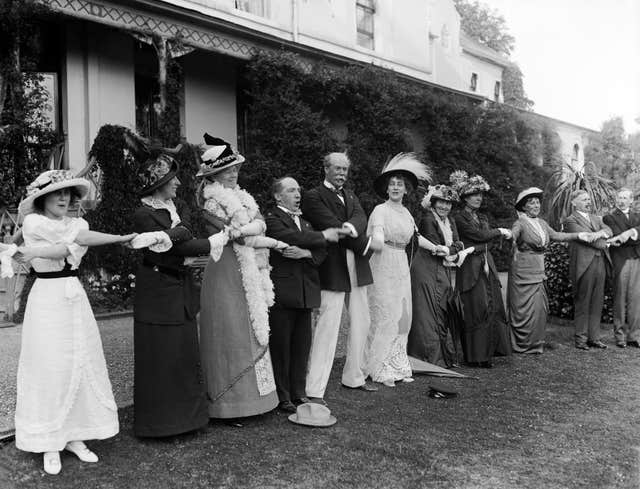Freemasonry behind Auld Lang Syne arm linking at new year
Research has uncovered a Masonic connection to why revellers around the world link arms when they sing Auld Lang Syne at new year.
A study of Robert Burns’ best-loved song links the practice to freemasonry, where singing with arms crossed and hands joined was a parting ritual in many lodges.
University of Edinburgh musicologist Morag Grant – who has published a book about the song – spotted the Masonic link while sifting through the archives of Glasgow’s Mitchell Library.

A newspaper report of an Ayrshire lodge’s Burns Supper in 1879 describes the song being sung as members formed “the circle of unity” – a common Masonic ritual also called the “chain of union”.
Dr Grant said the tradition of singing the song at times of parting, and doing so with crossed hands, emerged in the mid-19th century, not just among Freemasons, but in other fraternal organisations.
Burns was a Freemason all his adult life and the organisation was instrumental in promoting his work during his lifetime and after his death.
Dr Grant studied a range of historical sources – including written accounts, newspaper reports, theatre playbills, printed music and early recordings – to illuminate the song’s path to global popularity.

“Auld Lang Syne’s sentiments didn’t just resonate with Freemasons,” she said.
“Some of the earliest reports of the song’s use at parting come from American college graduations in the 1850s.”
Within decades, the use of the song at graduation had crossed to Japan, where the tune — known as Hotaru no hikari — is still played at the close of business in some shops.
Dr Grant’s study shows Auld Lang Syne’s global fame predates the invention of sound recording and radio, despite many commentators having previously linked its rise to the dawn of the broadcast era.

Her book records that in 1877, Alexander Graham Bell used it to demonstrate the telephone, and in 1890 it was one of the first songs recorded on Emil Berliner’s gramophone.
The song’s use at new year emerged around the same time, principally through exiled Scots gathering outside St Paul’s Cathedral in London, but also expatriates living abroad.
By 1929, the tradition was so well established internationally that a line from the song was displayed on the electronic ticker at new year celebrations in Times Square, New York.

The Scouts also played a key role in spreading its fame. The song was sung at the end of the first World Scout Jamboree in 1920 and versions in French, German, Greek and Polish soon followed.
Dr Grant’s book, Auld Lang Syne: A Song And Its Culture, also explores the song’s origins and Burns’ role in creating the modern song from older models.
She said: “It’s remarkable how this song, written in a language which even most Scots don’t fully understand, has become so synonymous with new year the world over.
“The many traditions and rituals associated with the song – as well as its simple, singable tune – are key to understanding its phenomenal spread, and why we still sing it today.
“Auld Lang Syne is a song about the ties that bind us to others across the years and even though its appeal is now global, it’s very much rooted in the world Burns inhabited.”
Auld Lang Syne: A Song And Its Culture by MJ Grant is published by OpenBook Publishers and is available to read free online.

 Yahoo News
Yahoo News 





